Two years ago we tested the Finnish-Chinese headphones Valco VMK20. The idea of the Finns was beautiful in its simplicity: take cheap Chinese headphones and improve them enough to turn a mediocre product into a decent one. The result turned out to be quite good: compared to the Chinese version, the Valco VMK20 had a more aesthetic finish, slightly improved sound in passive mode, and above all, they sounded much better in active mode thanks to the proprietary DSP and an improved ANC system. We liked them despite the mediocre wired sound. After two years (and with some delays), Valco introduced its successor: the VMK25.
The new model VMK25 is designed similarly to its predecessor: the headphones have similar size, the same type of folding mechanism, the same number and layout of buttons and sockets, a similar pad mounting system, a similar (but this time black only) finish of the earcup. Both models generally look fine to me; the only complaint I have about the appearance of the VMK25 (and the black version of the earlier VMK20s) is the large white logo on the cups, it simply looks cheap. Both models are delivered in a hard case, with identical cables (audio mini jack and USB C for charging) and airplane adapters. On that note, hats off to Valco for minimizing the amount of waste: headphones in a case are packed in a regular plastic bag sent in a large paper envelope, without any additional external packaging materials (boxes, plastic blisters, etc.).
Unlike in the case of its predecessor, I have not yet found Chinese headphones that would be near-identical to the Valco VMK25. It is possible that the new model was designed from scratch (or at least to a much greater extent than the VMK20), and not just an improved Chinese product, although symbols on the PCBs inside betray the Chinese origin of electronics.
The differences between the VMK25 and the older VMK20s start with the finish and shape of the case. It is the same type of case as with the previous model (hard, closed with a zipper), but made from a different material and with a different shape. The external finish of the new case looks better, but that’s where the good things end. The new case is round, but above all clearly higher (thicker) than the VMK20 case. This means that the headphones will be much less convenient to pack in a suitcase or backpack – and we are talking about headphones that are obviously intended for use while traveling. On top of that, neoprene (or a similar material) was clearly used in the case. This material, to put it mildly, has a rather intense smell, and plainly – it stinks. The case scores a big point for the older VMK20. Luckily, the VMK25 fit into the old VMK20 case, so I will probably use the old case when traveling.
When it comes to the headphones themselves, the most important practical external difference is the shape of the cups. The VMK20 have perfectly oval shells and pads, which fit my medium-sized ear comfortably – but barely, and for a person with larger ears they are a bit too small. The VMK25 ear cups and pads are wider at the top, making them more comfortable for people with larger ears. A big point for the VMK25.
The VMK25 pads, in addition to a different shape, have the same type of mounting system as in the VMK20, but with differently arranged latches. So you can’t switch the pads between models (which is a pity, because it would be an easy way to slightly increase the comfort of older VMK20s). Replacement pads for the VMK20 can be ordered on the Valco website for less than 25 euros (not cheap, not terrible), while the pads for the VMK25 are not available. According to information from Valco, there is no need for that at the moment, and they will be available sometime in the future. Until that happens, a point for the availability of replacement pads goes to the older VMK20s.
Another difference is the headband size adjustment system. It is the same type as in VMK20s, but in the VMK25 model it is located higher on the headband (further from the earcup). For me, this is a slightly less comfortable solution, I have to take off the headphones to adjust the size of the headband, and in the VMK20 I could easily adjust on my head. This is not a big problem – in my experience, after a few uses I know how to adjust the headband before putting the headphones on. On the other hand, the new headband extends a bit more, so there is a better chance that the VMK25 will fit a largee head. I personally give a small point to VMK20, but if you have a huge skull, your point will probably go to the new VMK25.
In VMK25, the hard (plastic) parts of the headband and earcups are covered with a matte soft touch coating that feels a bit like rubber. This has both advantages and disadvantages: on the one hand, this matte finish looks better and I have the impression that the headphones are less slippery (slightly lower risk of them accidentally slipping out of my hand), on the other hand, fingerprints and hard objects quickly leave marks on the coating. Besides, I have a very bad experience with items with a similar finish. In virtually all cases when I had a coating like that on the device (and I had several – a computer mouse, headphones of two different brands, amplifier knobs, even the entire front panel of a mini stereo system), after a few years it degraded and got awfully sticky. I don’t know if the Valco headphones are finished with the same material, time will tell. No point for now.
VMK25s are slightly heavier than their predecessors. The difference of approx. 30 g (not 50 g, as stated by Valco) is noticeable if you take both headphones in your hands at the same time. On the head, however, I practically do not feel it, so a point for weight for the VMK20 – but a tiny one.
In the VMK20, the braid on the shell was permanently attached and available in black, gray and white versions. In the new VMK25 the only choice is black, but the braid is not attached directly to the ear cups, but to a flat, removable cap (held in place with magnets), which can be removed to clean the braid without the risk of getting the headphones wet. Valco also provides 3D print models for the side panels, so if you have a 3D printer, you can print your own version of the cover with a skull, a kitten, an atomic mushroom, or in tasteful pink. Not important for me, but if someone likes to play with 3D printing (or has a meatballs-in-sauce-throwing toddler and has to wash themselves and the headphones every day) – a small point for the VMK25.
As already mentioned, the sockets and buttons in both models are arranged in the same way (including the audio cable socket located counterintuitively on the right cup), there is the same number of them and they have the same functions (well, almost – in the new model VMK25 the ANC button activates an additional mode, I’ll explain that later). But the function LEDs are much larger and have been moved inside the earcups, they are only visible after you take the headphones off. According to Valco, this will make it easier to lurk in the bushes at night. I admit I do not do that often, and never in headphones. Besides, in my opinion the smaller LEDs in the older VMK20s were visible enough and not really annoying, so the location and size of the function lights doesn’t make any difference to me. No point.
There are three more functional differences between the VMK20 and VMK25. The first is an additional ‘anti-ANC’ mode in which ambient sounds are let through to the headphones. This mode is activated by pressing the ANC button twice (the first press turns on ANC, the second turns on this additional listen-through mode, the third turns both modes off). In ANC mode, the microphones pick up sounds from the environment so that the system can suppress them. In the new listen-through mode, these sounds are instead amplified and played through the headphones. So if you are a creep, you can sit with our headphones on, pretend not to hear anything, but actually eavesdrop on everyone around you. Or you can sit in your headphones in a park and listen to birds singing. More importantly, you can also hear street sounds and airport announcements – and thus avoid various disasters. A point for VMK25.
As with the older model, the VMK25 headphones in passive wired mode can also be used while charging. But it is not possible to turn on ANC or BT while charging the headphones (you will not extend their operation time by connecting a power bank, for example), which was possible in the previous model. This is probably a safety feature, but still a point for VMK20.
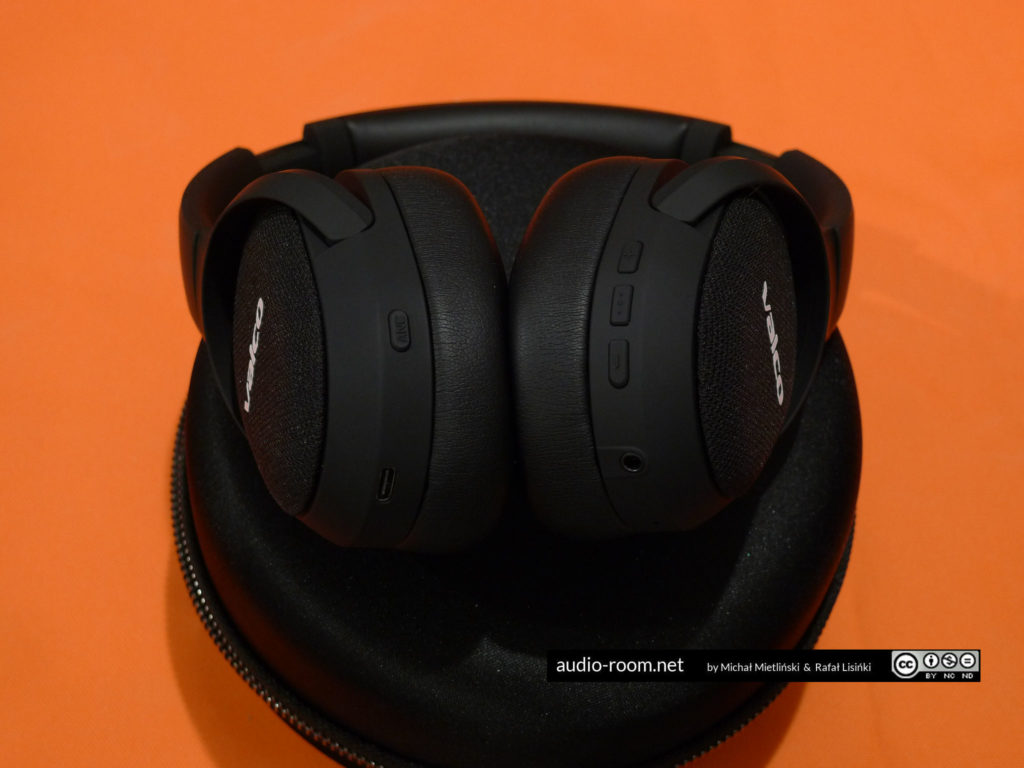
The third difference seemed quite bizarre to me, and at first I even suspected that it could be a bug. In the VMK20 model, it was possible to turn on the ANC (noise reduction) mode alone. In the new VMK25, however, ANC can be turned on only if bluetooth is turned on or an audio cable is plugged into the headphones (it does not need to be connected to any other device, just to the headphones). If BT is off and audio cable is not connected – game over, ANC will not turn on. What’s more, if you connect the audio cable, turn on ANC, and then disconnect the audio cable from the headphone, ANC will turn off. I’ve used the VMK20 with only ANC on (no music) on the go, especially on planes – on a longer flight I would put on my headphones, turn on the ANC and go to sleep in (relative) silence – so this is a downside for me. With the new Valco VMK25 I will have to remember to have an audio cable at hand and connect it to the headphones before turning on the ANC mode. I got an explanation from Valco that this change was made on purpose. Reportedly, some users would accidentally leave ANC on, which obviously drained the battery quickly. For me it is a change for the worse, but I understand that it solves the problem of other users.
We have more changes in electronics. Different drivers have been used (45mm, and the VMK20 had 40mm drivers; their impedance has also changed – almost 50 ohms in the VMK20, and the drivers of the new VMK25 measure below 30 ohms), a new ANC chip (manufacturer unknown) and a different BT chip . In any case, it is different than in the first version of the older VMK20 model, which originally had the Qualcom QCC3008 chip, supporting BT 5.0 and aptX LL codec. But these chips ran out missing and the later VMK20 batches were made with the Qualcom QCC3034 chip, supporting BT 5.1 and aptX HD codec (but without aptX LL support). Qualcom QCC3034 is also used in the new VMK25. The battery (still very generous 1050 mAh and declared about 50 hours of work) and the number of microphones have not changed.
In the older VMK20, after removing the pads and unscrewing the baffle, you could see the front (diaphragm) and back of the driver. It was protected from the front with a mesh, and only dampened from the back. In VMK25, the front of the driver is covered with a foam filter (which is glued onto the baffle and cannot be removed without tearing it), and there is a plastic cover glued on the back. This means that on the one hand the transducer is better protected, on the other it will be much more difficult to get to it if a repair is necessary; any attempt to modify the headphones will also be much more invasive and risky.
More about the electronics: in VMK25, the BT and ANC circuits are in the same, right cup (in the VMK20 the ANC circuit was in the left one), while the left cup only houses the power supply. The button switches are also different – they are softer, with a less pronounced click. The power (USB C) and audio (3.5 mm jack) sockets have not changed.
To sum up, compared to the older model, the cosmetic and design changes are rather for the better – but not all of them. Thanks to the differently shaped pads and the redesigned headband adjustment system, the headphones will be a bit more comfortable, especially for people with larger heads and ears. On the other hand, a thicker case will make it more difficult to pack them into your luggage.
And now the most important part: the sound. The new model has different electronics and drivers, so I expected it to sound different from its predecessor.
Valco headphones have several operating modes: two basic (active/BT and passive/wired); additionally, within each of them, the noise reduction system can be turned off, turned on or set to allow ambient sounds to pass through. In each of these modes, the headphones sound slightly different.
I started from the fully passive mode, with headphones connected to the sound source with a cable, and with all circuits turned off. I must say that in this mode the sound quality difference in favor of the new VMK25 model is huge. The problem that the VMK20 had in this mode has completely disappeared – no more overblown bass and muffled highs. The new VMK25 are still quite generous with bass, but it no longer drowns out other frequencies. It is also well controlled. The midrange at low volume is slightly softened, but not too much – just enough to make the headphones sound soft. When you turn up the volume, the midrange goes a bit forward and gains a lot of energy. The high are clean, clear, gentle when listening at low volume, a bit sharper at higher volume – but still not tiring. In general, in the passive mode, the sound of the headphones is quite warm, pleasant, but at the same time clear if you listen at a low level. When you turn up the volume, it becomes more lively and engaging. There is also quite a lot of air and space in the sound, which is quite an achievement considering that the headphones are not only closed, but have a nearly completely enclosed back of the driver, with only one small vent in the upper part of its rear cover. It is still not the quality of good closed studio headphones (like Beyerdynamic DT770), but the new VMK25 sound really good in passive mode, which could not be said about the older VMK20 model. In addition, they are easier to drive than their predecessors, perhaps due to the slightly lower driver impedance – with the same volume level set in the player, the VMK25 will sound clearly louder than the VMK20.
Just like the older model, in wired mode the VMK25 headphones can also be used with ANC turned on (but not while charging). Turning on ANC slightly brightens the sound – the amount of upper bass and lower midrange is reduced, while the low bass is slightly boosted and highs remain unchanged. It is still a good sound.
The sound of Valco VMK25 in wireless mode is better than in wired mode thanks to the use of a sound processor (DSP). This solution was previously used with very good results in the older model VMK20, which needed this sound improvement quite badly. In VMK25, the difference between wired and BT mode is not so drastic. While in the case of VMK20 turning on the BT gave the impression of putting on different, much better headphones, in the case of the VMK25 we are rather dealing with fine-tuning of the sound that was already very good to begin with. Resolution, clarity and bass control are slightly improved. Vocals gain some clarity, as to the details in the higher frequencies. The soundstage is also a bit larger than in wired mode. Compared to the VMK20, the new VMK25 present a more balanced sound: less aggressive, with better mids and without so clearly boosted lows and highs. I would still describe the sound as fun, but it is clearly more refined and neutral than in the older model. Thanks to the tempered highs, there is also no sibilance that I did hear in VMK20. Overall, the older VMK20 performed poorly in wired mode and not bad in wireless mode. The new VMK25 headphones are very good in wired mode and even better in wireless mode. VMK25s in any mode sound better than the VMK20s in wireless mode.
When ANC is turned on in wireless mode, the sound brightens up a bit and there is a very slight reverb. The difference between sound with and without ANC is smaller in BT mode than in wired mode.
Bluetooth pairing was seamless with all the devices I tested the headphones with (phones, laptops, a Fiio X1II DAP). Voice messages in English, like in VMK20, are delivered by a low, ‘radio’ male voice. In home conditions and within a few meters from the sound source (transmitter), the connection is stable if there are no significant obstacles, such as thick walls, between the headphones and the source. Behind the wall and at a greater distance, the sound can drop out and disappear (but certainly not more than with other BT headphones that I used in my apartment), but the headphones do not lose connection, the sound returns and stabilizes after getting closer to the transmitter again. When using the headphones outdoors (paired with a phone kept in my pants pocket), I had no connection problems whatsoever. The playback control with the buttons on the headphones (volume control, switching tracks, pausing and resuming playback) also worked well.
The headphones use the minimally lossy aptX HD codec, just like the later batches of the previous VMK20 model. The first version of VMK20 supported the aptX LL codec. Each of these codecs has advantages and disadvantages. The aptX HD codec has the highest bandwidth and supports a higher resolution (576 kbps, 24 bits and 48 kHz), but with a larger sound delay (approx. 250 ms, perception threshold is 100 ms). On the other hand, aptX LL, designed especially for games and movies, minimizes sound delay (approx. 40 ms, below perception threshold), but its bandwidth is lower (352 kbps, 16 bits and 48 kHz). Consequently, in wireless mode, the VMK25 headphones are best suited for listening to music. The quality of wireless sound is indeed very good. However, when watching a movie, I noticed a slight delay of the sound in relation to the picture. In the long run, it can be annoying and of course makes the headphones (used in wireless mode) unsuitable for dynamic games. If the sound is to be perfectly synchronized with the picture – you need to use wired connection.
The noise reduction (ANC) system has no additional adjustments or user settings, but it is effective and works very well in urban and transport environments. On an airplane, city bus or in a busy street, the headphones eliminated most of the noise, and I was able to listen to music at a much lower volume than I would with relatively well isolating passive headphones (without ANC). Even turning on the noise reduction alone, without music playing, significantly improves the comfort of traveling in more noisy vehicles (trains, airplanes). Their noise ceases to be tiresome and, for example, bother me while reading or trying to sleep. The only problem I noticed was interference during stronger shocks, e.g. a bus bouncing on potholes, when the headphones lost their seal on the head for a moment. But this could only be eliminated by increasing the pressure of the headphones on the head, which in turn would drastically reduce the comfort.
Charging takes place via a USB type C socket and takes 2-3 hours. The power source is a 1050 mAH battery (very large, the battery capacity in medium-sized models of headphones from well known brands is usually only half of that or less), which, according to the manufacturer, translates into about 50 hours of listening with ANC turned on. In my test, with ANC turned on and the volume set quite high, the headphones discharged after 57 hours and 28 minutes of continuous playing, which is not only a simply fantastic result, but also clearly better than the performance of the VMK20 (which lasted 50 hours in my test, and that was with ANC off). The battery in both models is identical, so the longer working time of the new model is probably due to the use of less power-hungry, lower impedance drivers, and possibly also different electronics. The headphones do not communicate that the battery is low in any way; when the battery is depleted, we hear ‘POWER OFF’ and the headphones simply turn off. But with such a long working time, this is hardly a problem – most users won’t wait anyway and will recharge the headphones before the battery is completely drained.
Unfortunately, the lack of the aptx LL codec and the resulting slight audio delay makes the Valco VMK25 headphones used in wireless mode unsuitable for gaming and possibly a bit annoying for some people while watching movies. But we focus primarily on sound quality, and that is where the new Valco headphones are a success. The price difference between the new model and its predecessor VMK20 (still available for 149 euros) is 50 euros, and in our opinion it is worth paying, especially that the current version of VMK20 also does not have the aptx LL codec either. Although some changes are a sidestep compared to the older model, and even a step back (like a better looking, but definitely less practical case, no possibility to use ANC and BT modes while charging), a lot has been improved. Firstly, the new model offers good sound also in wired mode. In wireless mode, it sounds a bit less ‘fun’, but in my opinion clearly better than its predecessor – more refined, with a better mids, less boosted but still very clear highs and better controlled bass. The noise reduction system is effective and has less impact on the overall sound in wireless mode. The VMK25 inherited a high-capacity battery its predecessor and squeezes an even longer working from it. Despite a slightly higher weight, thanks to the changed shape of the earpads and the increased adjustment range of the headband, the new Valco headphones are more comfortable than their predecessors (at least for people with larger ears and heads). Compared to the more expensive products from well known brands – they do not have extra functions such as NFC pairing, additional ANC settings or touch control, but they are clearly cheaper, sound at least as good, have a good aesthetics, are equally (or more) comfortable and wipe the floor with most of the competition when it comes to battery time.
Technical data:
Valco VMK25
Bluetooth: 5.1 APTX HD, SBC and AAC
Chipset: Qualcomm QCC3034 with custom DSP setup
Active Noise Cancellation (ANC): Active hybrid noise cangellinh with 4 microphones
Amplifier: Class AB
Drivers: dynamic, 45 mm, nominal impedance 32 ohms
Weight: approx. 280g
Battery: 1050 mAh
Charging time: 2-3 hours, USB-C connector
Battery time (according to the manufacturer): up to 50 hours listening with ANC on, 45 hours on phone call
Battery time (our test): 57 hours and 28 minutes of listening at fairly high volume with ANC on.
Siri and Google Home support
Handsfree phone calls, microphone with CVC8 noise reduction
Included: 3.5 mm jack audio cable, airplane adapter, USB-C charging cable, hard case


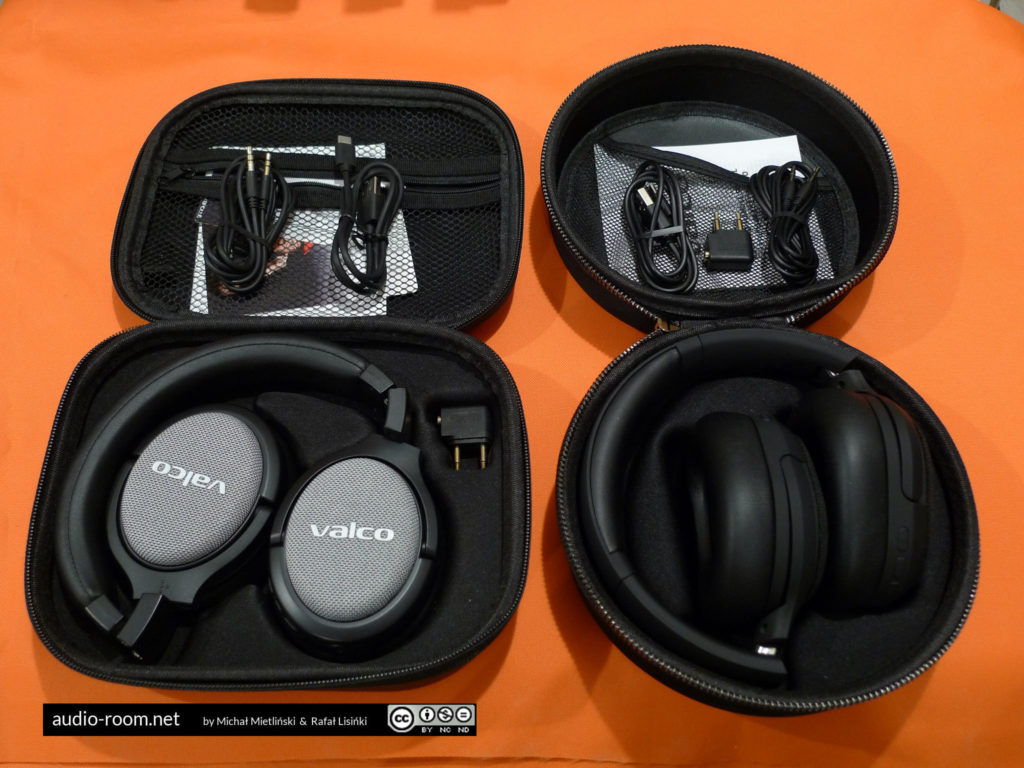

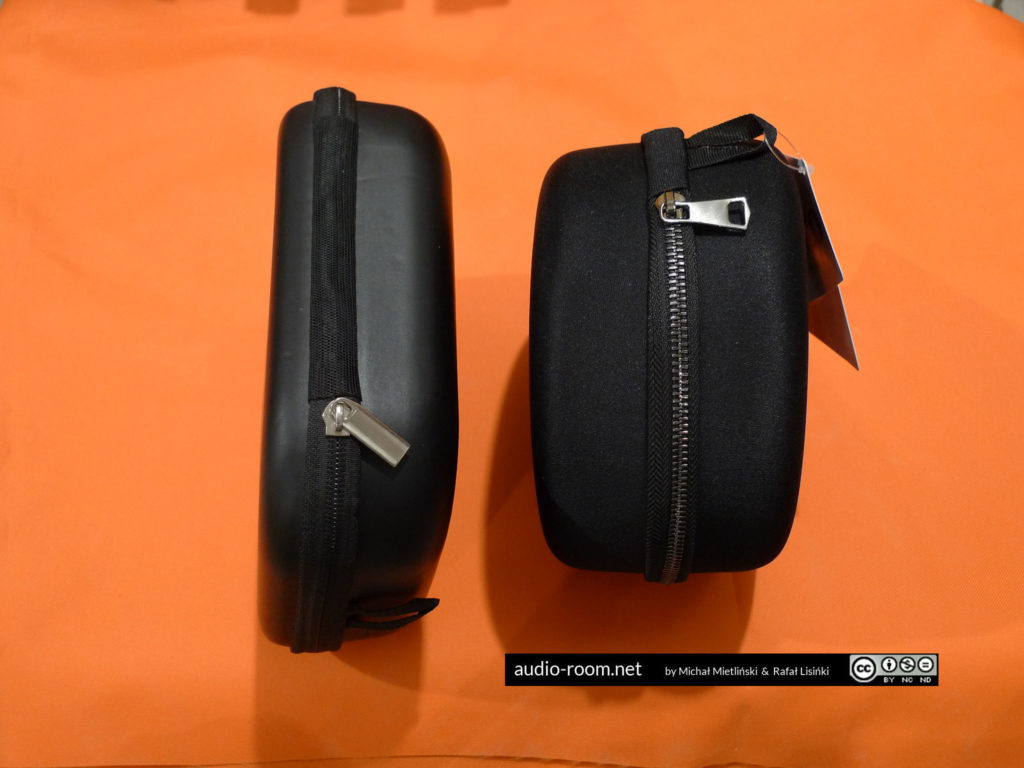
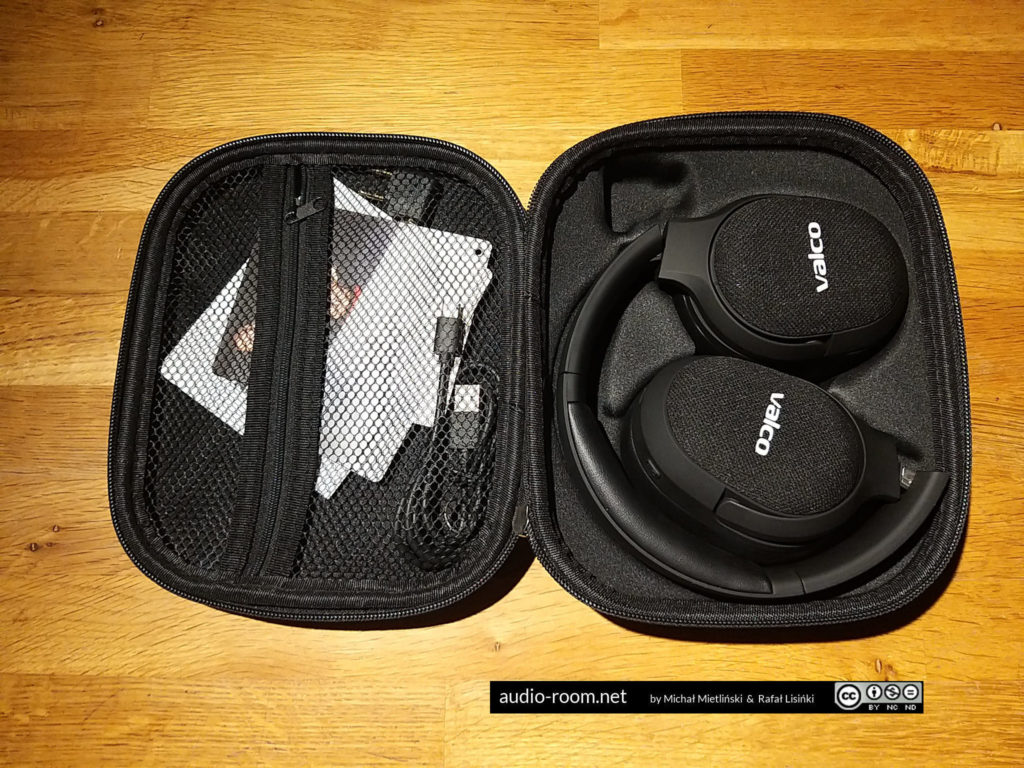


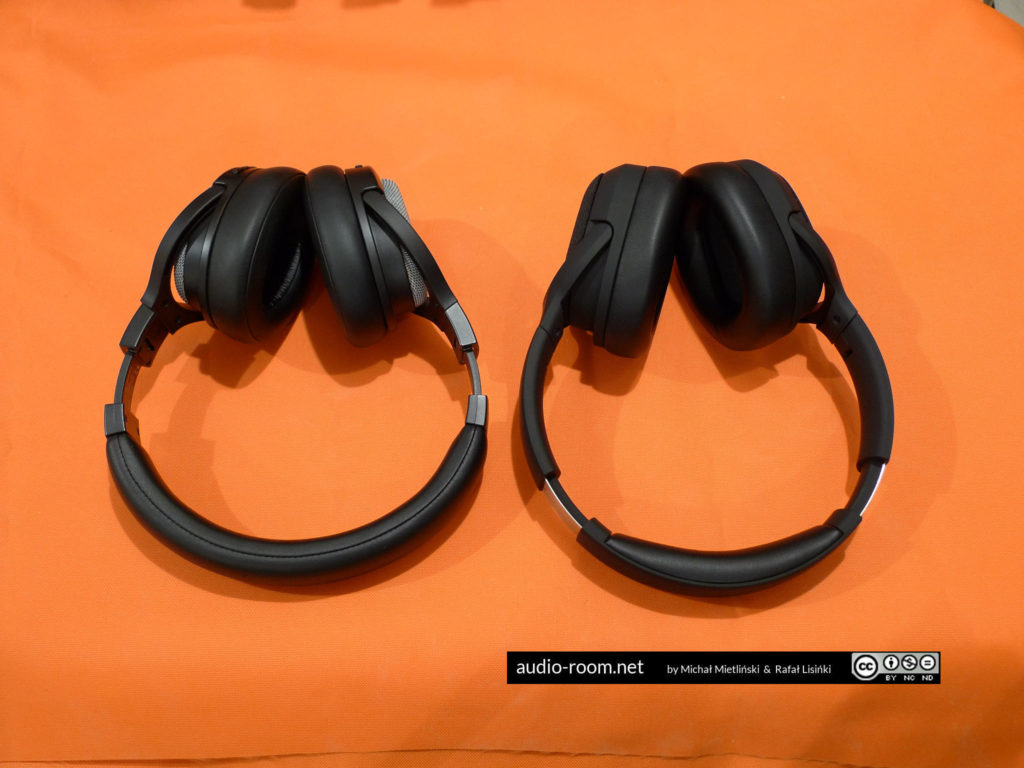



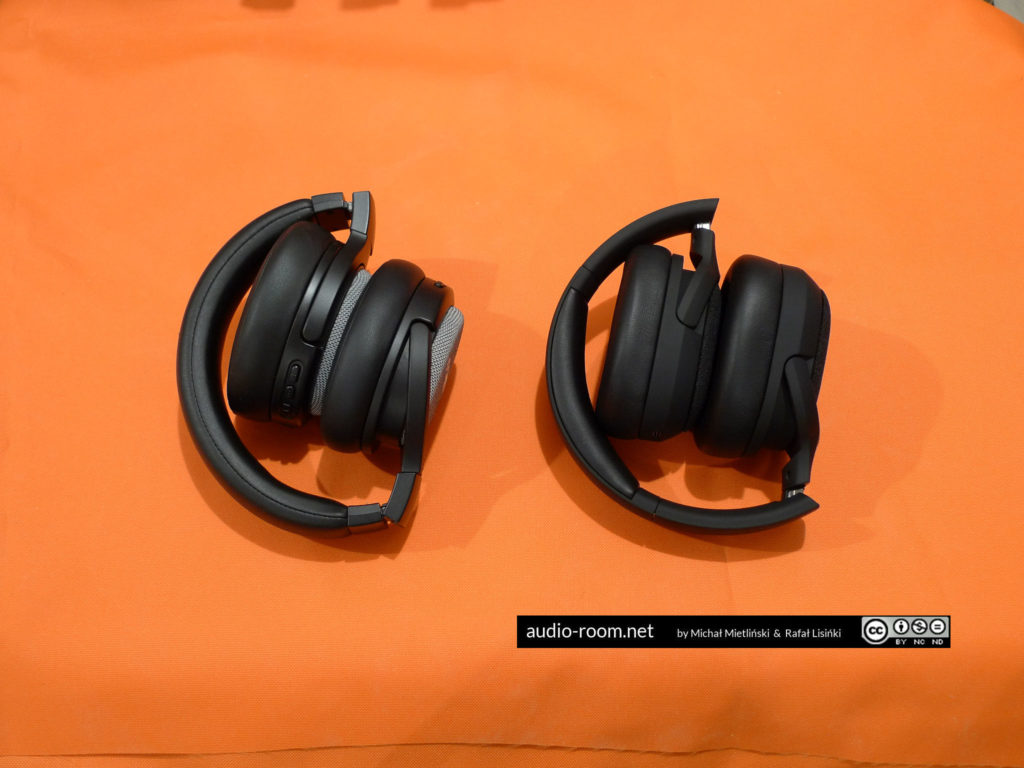

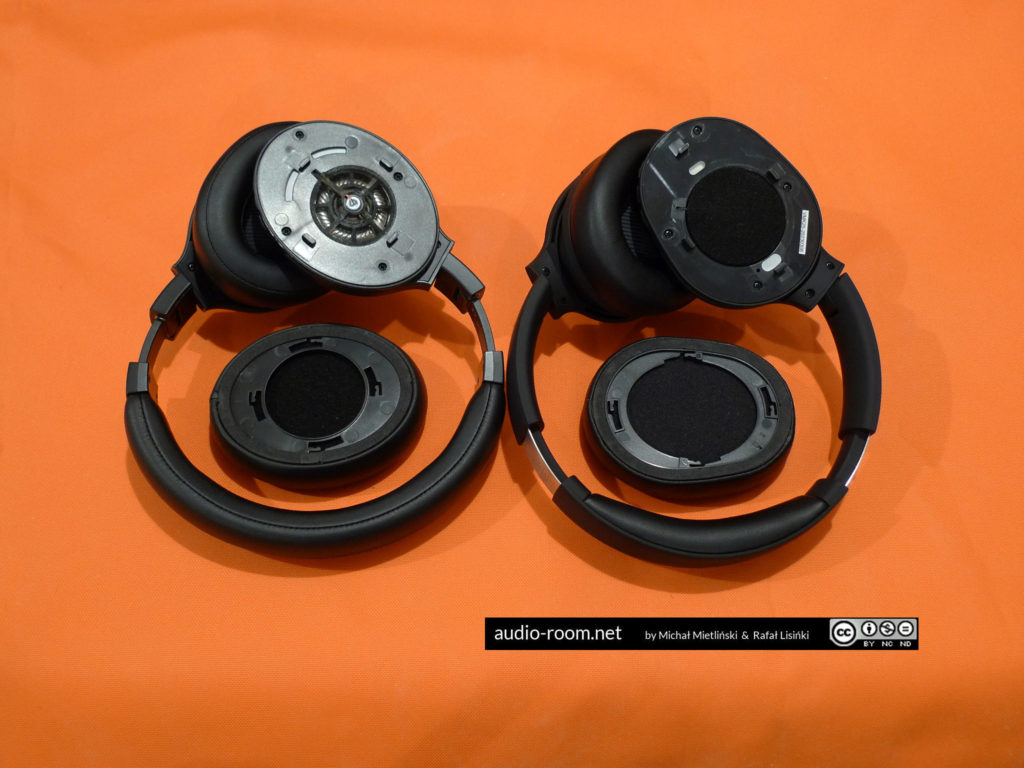

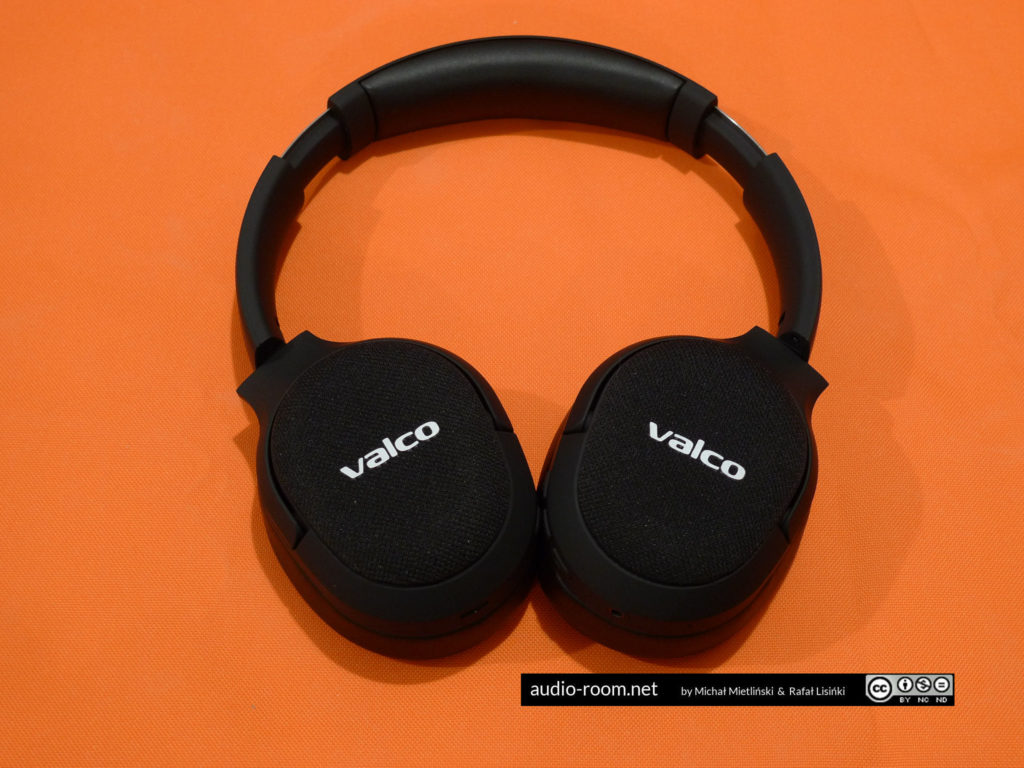

I would like to add that the VMK25 new headband adjustment system makes the headphones fit to small heads way better than VMK19 or VMK20. VMK20 keeps falling off, but VMK25 stays firmly in place.
Thank you for this information. We did not have an opportunity to check how they fit smaller heads, so that is good to know.
Can you comment more, or even take a picture how the VMK25 fits in the VMK20 case? I’m also interested in the small case and have the opportunity to buy one but just want to make sure it fits well.
The hinges in VMK25 and VMK20 work the same way and the headphones have very similar sizes. VMK25 can be placed in the VMK20 case the same way as VMK20 (earpads down) or, more easily, with earpads up (that’s my preference). I added photos of both ways to the review above. BTW, VMK25 also fit in cases supplied with Domax M1 (the headphones VMK20 were based on, the fit is tighter but works) and Beyerdynamic Custom Street, which are both smaller than the VMK25 case.